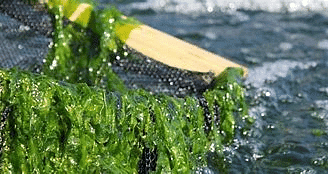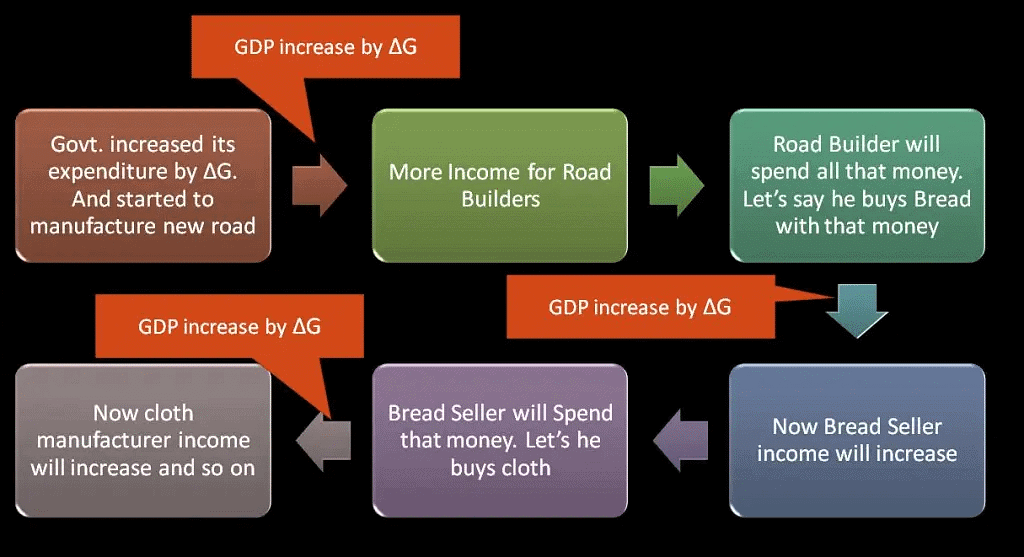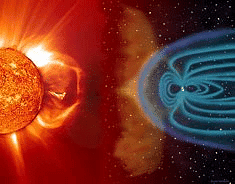UPSC Daily Current Affairs- 6th February 2024 | Current Affairs & Hindu Analysis: Daily, Weekly & Monthly PDF Download
GS-I
Seaweed Cultivation
Subject: Geography

Why in News?
Recently, the first National Conference on the Promotion of Seaweed Cultivation took place at Koteshwar, Kutch in Gujarat.
Background:-
- It was chaired by Union Minister of Fisheries, Animal Husbandry & Dairying, Shri Parshottam Rupala .
- Objective: implementing seaweed cultivation on a pan-India basis, emphasizing the promotion of seaweed cultivation to diversify marine production and enhance fish farmer income.
About of Seaweed Cultivation:-
- Seaweed is the name given to the many species of marine algae and plants.
- These species grow in water bodies such as rivers, seas and oceans.
- They generally grow in the shallow waters in the tidal zone.
- Some seaweeds are microscopic, such as the phytoplankton that live suspended in the water column.
- Seaweed is full of vitamins, minerals, & fibre.
- Many seaweeds contain anti-inflammatory & anti-microbial agents.
- They are known to process significant medicinal effects.
- Certain seaweeds possess powerful cancer-fighting agents.
- They are used in organic cosmetics & skin-care products.
Seaweed Farming:-
- It is the practice of cultivating and harvesting seaweed.
- Seaweeds are abundant along the Tamil Nadu and Gujarat coasts and around Lakshadweep and Andaman & Nicobar Islands.
Government Initiatives:-
- Seaweed Mission: aims to commercialize seaweed farming and processing for value addition.
- It also aims to increase cultivation along India’s 7,500-kilometer coastline.
- The Indian Council of Agricultural Research(ICAR)- Central Marine Fisheries Research Institute (CMFRI) has successfully commercialized two seaweed-based nutraceutical products, CadalminTM Immunalgin extract (CadalminTM IMe) and CadalminTM Antihypercholesterolemic extract (CadalminTM ACe).
- Multi-Purpose Seaweed Park in Tamil Nadu.
Source: ICAR
Grammy Awards
Subject: Art and Culture
Why in News?
Recently, the Prime Minister, Shri Narendra Modi, congratulated musicians Ustad Zakir Hussain, Rakesh Chaurasia, Shankar Mahadevan, Selvaganesh V and Ganesh Rajagopalan for winning the Grammy award.
Background:-
- He said that their exceptional talent and dedication to music have won hearts worldwide, making India proud.
About Grammy Awards:-
- The Grammy Awards are presented by the Recording Academy of the US.
- The awards are presented to recognize the works of the music industry.
- The first Grammy Awards ceremony was held on May 4, 1959, to honour the musical accomplishments of performers for the year 1958.
Categories:-
- The “General Field” are four awards that are not restricted by genre:
- Album of the Year
- Record of the Year
- Song of the Year
- Best New Artiste
- Winners are selected from more than 25 fields, which cover such genres as pop, rock, rap, R&B, country, reggae, classical, gospel, and jazz, as well as production and postproduction work, including packaging and album notes.
- The honorees receive a golden statuette of a gramophone.
Source: PIB
Messinian Event
Subject: Geography

Why in News?
The Geological Institute of Israel recently uncovered a never-before-known underwater canyon near Cyprus that dates back to the Messinian Event.
About Messinian Event:
- Also known as the Messinian Salinity Crisis (MSC), the Messinian event was a geological event during which the Mediterranean Sea went into a cycle of partial or nearly complete desiccation (drying up).
- It was one of the most severe ecological crises in the Earth's history.
- The MSC began approximately 6 million years ago (MYA) and lasted until around 5.3 MYA.
- How has it unfolded?
- It began when the connection between the Atlantic Ocean and the Mediterranean Sea was cut off.
- This occurred due to a combination of lowered sea levels in the global oceans and a collision between the European and African plates that caused the land to lift.
- Normally, there is much more evaporation than precipitation over the Mediterranean Sea. This means that much more water is leaving than entering the sea.
- Without a significant source of water from the Atlantic Ocean, this led to the evaporation of much of the Mediterranean Sea.
- A large underground canyon formed, and rivers made deep incisions into the bottom of the basin. This canyon was much larger than the Grand Canyon and had a depth of up to 2,000 metres (6562 feet).
- As the water in the Mediterranean evaporated, the salt that was in the water was left behind and began to build up in layers on the floor of the Mediterranean.
- Two major salts that were deposited on the floor were Halite and Gypsum. Some of the salt deposit areas were 800 metres (2,500 feet) deep.
- However, the salt in the Mediterranean did not deposit on the floor as quickly as the water was evaporating. This means that whatever water was left in the Mediterranean became very salty.
- This high amount of salt in the water (also known as salinity) caused the Mediterranean to become deadly to all marine life.
- The Mediterranean continued to dry up until there was almost no water left.
- It ended with the Zanclean flood when the Atlantic reclaimed the basin.
What is a Deep-sea Canyon?
- Deep-sea canyons are steep-sided valleys cut into the seafloor of the continental slope, sometimes extending well onto the continental shelf.
- These submarine canyons vary in size, shape, and morphological complexity; some were scoured by the flow of rivers during past low sea level periods, but most formed via other erosional processes, such as mudslides, debris flows, and turbidity currents.
Source: Times of India
GS-II
Protection of Children from Sexual Offences (POCSO) Act
Subject: Polity and Governance

Why in News?
Recently, SC remitted a 20-year sentence of a Protection of Children from Sexual Offences (POCSO) Act convict to save marriage with his victim in Tamil Nadu.
Background:-
- A three-judge Bench headed by Chief Justice of India D.Y. Chandrachud on Monday remitted the 20-year sentence of a man found guilty of the aggravated sexual assault of a 14-year-old girl whom he later married and had children within Tamil Nadu.
About Protection of Children from Sexual Offences (POCSO) Act:-
- Enacted: 2012.
- Ministry: Ministry of Women and Child Development.
- Objectives: to address offences of sexual exploitation and sexual abuse of children, which were either not specifically defined or adequately penalized.
Historic Background:-
- It was enacted as a consequence of India’s ratification of the UN Convention on the Rights of the Child in 1992.
- The POCSO Act was enacted in 2012 to provide a robust legal framework for the protection of children from offences of sexual assault, sexual harassment, and pornography while safeguarding the interests of children at every stage of the judicial process.
- In 2019, the Act was amended to strengthen the penalties for specified offences in order to deter abusers and promote a dignified upbringing.
Salient Features:-
- The Act defines a child as “any person” under the age of 18.
- The Act recognizes that both girls and boys can be victims of sexual abuse.
- Any person in charge of an institution (excluding children) who fails to report the commission of a sexual offense involving a subordinate faces punishment.
- A victim may report an offense at any time, even years after the abuse has occurred.
- The Act forbids the disclosure of the victim’s identity in any form of media unless authorized by the special courts established by the Act.
- The new rules include the provision of mandatory police verification of staff in schools and care homes, procedures to report sexual abuse material (pornography), and imparting age-appropriate child rights education among others.
- For a crackdown on child pornography, any person who has received any pornographic material involving a child or any information regarding such pornographic material shall report the contents to the Special Juvenile Police Unit (SJPU) or police, or the cybercrime portal.
- Under the rules, the State Governments have been asked to formulate a child protection policy based on the principle of zero-tolerance to violence against children, which shall be adopted by all institutions, organizations, or any other agency working with or coming in contact with children.
- The Central Government and every State Government shall provide periodic training.
- The Centre and State Governments have been asked to prepare age-appropriate educational material and curriculum for children, informing them about various aspects of personal safety.
- According to rules, orientation programmes and intensive courses may also be organized for police personnel and forensic experts.
- Any institution housing children or coming in regular contact with children, including schools, crèches, sports academies, or any other facility for children must ensure a police verification and background check on a periodic basis of every staff.
Challenges:-
- Low Representation of Women in the Police Force.
- Lapses in the Investigation.
- No Conditions to Prove Recent Intercourse.
Source: PIB
GS-III
Fiscal Consolidation
Subject: Economy

Why in News?
Recently, Fiscal Consolidation was emphasized in the budget.
Background:-
- Union Finance Minister Nirmala Sitharaman announced during her Budget speech that the Centre would reduce its fiscal deficit to 5.1% of gross domestic product (GDP) in 2024-25.
About Fiscal Consolidation:-
- Fiscal consolidation is a process where government’s fiscal health is getting improved and is indicated by reduced fiscal deficit.
- As the fiscal deficit falls below a tolerable level, improved tax revenue realization and better directed expenditure are key components of fiscal consolidation.
- In India, the fiscal deficit is the most important indicator of the government’s financial health.
- In India, fiscal consolidation or the fiscal roadmap for the centre is expressed in terms of the budgetary targets (fiscal deficit and revenue deficit) to be realized in successive budgets
- The Fiscal Responsibility and Budget Management (FRBM) Act gives the targets for fiscal consolidation in India.
- According to FRBM, the government should eliminate the revenue deficit and reduce the fiscal deficit to 3% (medium term) of the GDP.
Measures from the expenditure side and revenue side are envisaged by the government to achieve fiscal consolidation:-
- Improved tax revenue realization: For this, increasing efficiency of tax administration by reducing tax avoidance, eliminating tax evasion, enhancing tax compliance etc. are to be made.
- Enhancing tax GDP ratio by widening the tax base and minimizing tax concessions and exemptions also improves tax revenues.
- Better targeting of government subsidies and extending the Direct Benefit Transfer scheme for more subsidies.
Source: The Hindu
Nagoya Protocol
Subject: Environment

Why in News?
Cameroon recently adopted the Nagoya Protocol on Access and Benefit Sharing.
About Nagoya Protocol:
- The Nagoya Protocol on Access to Genetic Resources and the Fair and Equitable Sharing of Benefits Arising from their Utilisation (the Protocol) is a legally binding global agreement that implements the access and benefit-sharing obligations of the Convention on Biological Diversity (CBD).
- It was adopted by the CBD in Nagoya, Japan, in October 2010 and entered into force on October 12, 2014, 90 days after the deposit of the fiftieth instrument of ratification.
- It provides a transparent legal framework for the effective implementation of one of the three objectives of the CBD: the fair and equitable sharing of benefits arising out of the utilisation of genetic resources.
- What are the benefits?
- It establishes a framework that helps researchers access genetic resources for biotechnology research, development, and other activities, in return for a fair share of any benefits from their use.
- This provides the research and development sector with the certainty they need to invest in biodiversity-based research.
- Indigenous and local communities may receive benefits through a legal framework that respects the value of traditional knowledge associated with genetic resources.
- What does the Nagoya Protocol cover?
- It applies to genetic resources that are covered by the CBD, and to the benefits arising from their utilisation.
- It also covers traditional knowledge (TK) associated with genetic resources that are covered by the CBD and the benefits arising from their utilisation.
Key Facts about the Convention on Biological Diversity (CBD):
- CBD, with 196 contracting parties, is the most comprehensive binding international agreement in the field of nature conservation and the sustainable use of natural resources.
- It was opened for signing at the UN Conference on Environment and Development in Rio de Janeiro in 1992.
- It has three overarching objectives:
- The conservation of biological diversity (genetic diversity, species diversity, and habitat diversity).
- The sustainable use of biological diversity.
- The fair and equitable sharing of the benefits arising out of the utilisation of genetic resources.
- It covers biodiversity at all levels: ecosystems, species, and genetic resources.
- The Conference of the Parties (COP) is the highest political decision-making body of the Convention.
- The Secretariat is based in Montreal, Canada.
- To support the implementation of the CBD objectives, two internationally binding agreements were adopted within the framework of the Convention on Biological Diversity.
- The Cartagena Protocol, which was adopted in 2000 and entered into force in 2003, regulates the transboundary movement of living modified organisms (LMOs).
- The Nagoya Protocol, adopted in 2010, establishes a legally binding framework for access to genetic resources and the fair and equitable sharing of the benefits arising from their use.
Source: DTE
Coronal Mass Ejections (CMEs)
Subject: Science and Technology

Why in News?
An Indian Institute of Astrophysics (IIA) team along with their international collaborators recently developed a new model of the internal thermal evolution of coronal mass ejections (CMEs), as they travel from the sun toward the Earth.
About Coronal Mass Ejections (CMEs):
- CMEs are large expulsions of plasma and magnetic field from the sun's atmosphere—the corona, that propagate outward into interplanetary space.
- During a CME, the sun releases a colossal amount of material, including electrons, protons, and heavier ions, as well as magnetic fields.
- How are they formed?
- They form similarly to solar flares—a result of the twisting and realignment of the sun's magnetic field, known as magnetic reconnection.
- When magnetic field lines "tangle" they produce strong localised magnetic fields which can break through the surface of the sun at active regions, subsequently generating CMEs.
- CMEs usually take place around sunspot groups and are often accompanied by a solar flare, though the two don't always occur in tandem.
- CMEs travel outward from the sun at speeds ranging from slower than 250 kilometres per second (km/s) to as fast as 3000 km/s.
- The fastest Earth-directed CMEs can reach our planet in as little as 15-18 hours.
- They expand in size as they propagate away from the Sun, and larger CMEs can reach a size comprising nearly a quarter of the space between Earth and the Sun by the time they reach our planet.
- CMEs, like solar flares, are most common during the solar maximum, a period in the sun's 11-year cycle of activity when the star is at its most active.
- Impact on Earth:
- Geomagnetic Storms: The interaction between the CME's magnetic fields and Earth's magnetosphere can lead to geomagnetic storms. These can disrupt satellite communications, navigation systems, and even power grids.
- Auroras: CMEs can cause spectacular displays of the Northern and Southern Lights, also known as auroras, by energising particles in Earth's atmosphere.
- Radiation Hazards: Astronauts in space or passengers on high-altitude flights can be exposed to elevated levels of radiation during a CME event.
Source: The Hindu
|
59 videos|5388 docs|1140 tests
|
FAQs on UPSC Daily Current Affairs- 6th February 2024 - Current Affairs & Hindu Analysis: Daily, Weekly & Monthly
| 1. What is seaweed cultivation? |  |
| 2. What are the Grammy Awards? |  |
| 3. What is the Messinian Event? |  |
| 4. What is the Protection of Children from Sexual Offences (POCSO) Act? |  |
| 5. What are Coronal Mass Ejections (CMEs)? |  |
















